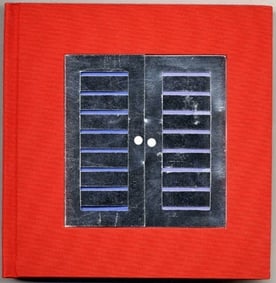Nothing holds so little interest and yet so much possibility as a blank piece of paper. It is a canvas for the written word, to be sure, but in its original state, it lacks dimension, texture and movement. With a few simple folds, however, it can be transformed. It can become an airplane and soar, taking one’s imagination with it. Accomplishing even this rudimentary task requires that one respect the limitations of the material and simultaneously coax out its potential. Pop-up book artist Robert Sabuda is a master at doing just that.
Who is Robert Sabuda?
 Robert Sabuda is a midwestern artist who is technically a paper engineer, but prefers to think of himself as a “book maker.” He grew up during the 1970s, a golden age of pop-up books. His early fascination with them inspired home-made versions crafted from used manila folders that his mother brought home from her work at the Ford Motor Company. Sabuda continued to develop his artistic skills, and eventually attended the esteemed Pratt Institute in New York City to continue his studies. He published his first Pop-up book, The Christmas Alphabet in 1994 and has been breaking new ground within the art form ever since.
Robert Sabuda is a midwestern artist who is technically a paper engineer, but prefers to think of himself as a “book maker.” He grew up during the 1970s, a golden age of pop-up books. His early fascination with them inspired home-made versions crafted from used manila folders that his mother brought home from her work at the Ford Motor Company. Sabuda continued to develop his artistic skills, and eventually attended the esteemed Pratt Institute in New York City to continue his studies. He published his first Pop-up book, The Christmas Alphabet in 1994 and has been breaking new ground within the art form ever since.
Discover for yourself the beauty, ingenuity, and delight of the Sabuda creations in the following categories:
Holiday Books
Opening each and every page of a pop-up book is like unwrapping a present. There is always a surprise within to reward the reader. Maybe that’s why pop-up books are so ideally suited to holiday time, when giving and receiving gifts is often the tradition. Sabuda’s first published book, The Christmas Alphabet, now keeps company with A Kwanzaa Celebration: A pop-up Book, The 12 Days of Christmas, Chanukah Lights, and Clement C. Moore’s beloved Christmas Eve classic, The Night Before Christmas.
Classics
Other classic stories have also been given a new life in pop-up versions. Robert Sabuda has applied his considerable talent in engineering paper to creating three dimensional versions of Oz in The Wonderful Wizard of Oz and of the far side of the rabbit hole in Alice’s Adventures in Wonderland. In Peter Pan, he has Peter burst from the page and head, no doubt, to “the second star from the right and straight on till morning,” while in Beauty & the Beast he invites us into the castle and the enchantments it holds. All of these are well-suited to the pop-up art form because of the detailed worlds the reader enters in the stories.
Series
In collaboration with Matthew Reinhart, Sabuda embarked on The New York Times best-selling series: Encyclopedia Prehistorica. The first book is about dinosaurs and includes everything a budding paleontologist craves. While prehistoric beasts explode from its pages, and pterodactyls soar beyond the books edge, the reader learns a myriad of interesting facts and bits of trivia. The second book in the series, Encyclopedia Prehistorica: Sharks and Other Sea Monsters, and the final installment, Mega Beasts, follow the same formula, capturing the imagination while imparting knowledge. This series makes traditional Encyclopedias seem prehistoric indeed!
A second volume called Encyclopedia Mythologica is a bit lighter on fact but rich in myth and legend. It includes books on fairies and magical creatures, gods and heroes, and dragons and monsters.
Robert Sabuda is not only a creator of beautifully imaginative pop-up books, he is a collector of them as well. One in his collection dates back to 1840 and contains a wire coil to activate the movement of the paper. When he touches that coil today, he connects with the artistry of a “book maker” who worked over a century ago. Pop-up books are still made by hand. They are still painstakingly designed and then assembled individually. Maybe that is why turning the first page of a pop-up book is such a special feeling. It is a book—a world, made especially for you. It is an invitation, like no other, to truly enter a story. Whether one chooses to walk among dragons or dinosaurs, to fall through the earth or fly from it, there is a Robert Sabuda creation to take you there.










